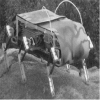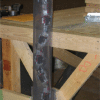Biomimetics: forecasting the future of science, engineering, and medicine
- PMID: 26388692
- PMCID: PMC4572716
- DOI: 10.2147/IJN.S83642
Biomimetics: forecasting the future of science, engineering, and medicine
Abstract
Biomimetics is the study of nature and natural phenomena to understand the principles of underlying mechanisms, to obtain ideas from nature, and to apply concepts that may benefit science, engineering, and medicine. Examples of biomimetic studies include fluid-drag reduction swimsuits inspired by the structure of shark's skin, velcro fasteners modeled on burrs, shape of airplanes developed from the look of birds, and stable building structures copied from the backbone of turban shells. In this article, we focus on the current research topics in biomimetics and discuss the potential of biomimetics in science, engineering, and medicine. Our report proposes to become a blueprint for accomplishments that can stem from biomimetics in the next 5 years as well as providing insight into their unseen limitations.
Keywords: biomaterials; biomimicry; nanomedicine; nanotechnology; nature; tissue engineering.
Figures










References
-
- Benyus JM. Biomimicry. HarperCollins e-books; 2009.
-
- Shimomura M. The new trends in next generation biomimetics material technology: learning from biodiversity. Sci Technol Trends Q Rev. 2010;37:53–75.
-
- Hargroves K, Smith M. Innovation inspired by nature: biomimicry. ECOS. 2006;2006(129):27–29.
-
- Pemsel H. A History of War at Sea: An Atlas and Chronology of Conflict at Sea from Earliest Times to the Present. Naval Institute Press; 1977.
Publication types
MeSH terms
Substances
LinkOut - more resources
Full Text Sources

